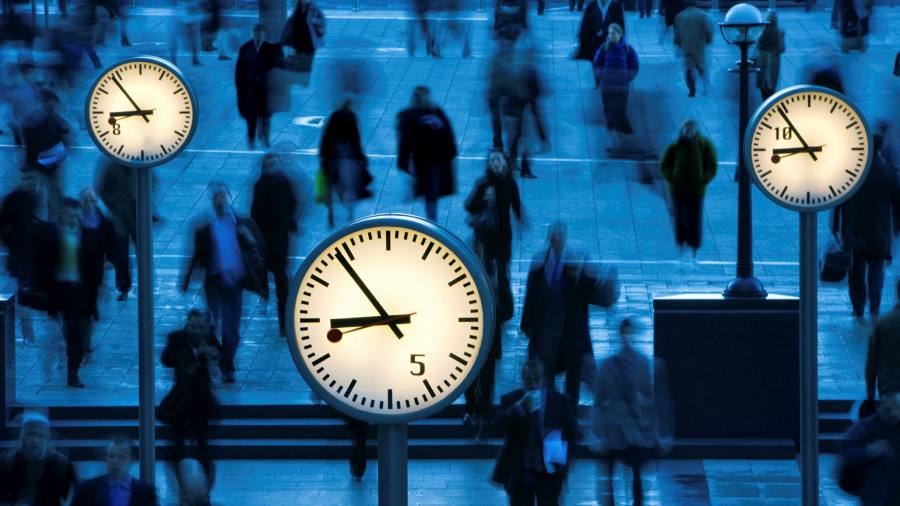[ad_1]
“Working 9 to 5, what a way to make a livin’,†Dolly Parton sang in 1980. “Barely gettin’ by, it’s all takin’ and no givin’.†The declaration by Salesforce, the biggest private employer in San Francisco, that the traditional 9 to 5 workday is dead, ought to come as some comfort to workers. Instead of all employees being in the office all week, the cloud computing company will split them into three categories: some will be fully remote, others will be “flex†and at their desks one to three days a week, while only a small minority will always be in the office.
The mass experiment in remote working that the pandemic has brought on opens the possibility of transforming how we work for the better. Allowing workers to balance their home lives and family commitments with their work, has long been a priority for employees as well as a potentially productivity-enhancing innovation for employers. In the words of Brent Hyder, the chief people officer who wrote the Salesforce blog declaring an end to the 9 to 5, “workers need flexibility to be successfulâ€.
As recently as last week Parton rewrote her anthem for a Super Bowl ad as “5 to 9â€, a hymn to the importance of having a “side hustleâ€. The lyrics go: “5 to 9, you’ve got passion and a vision/’Cause it’s hustlin’ time, a whole new way to make a livin’.†The rewrite was to promote Squarespace, a website hosting company that people could use to promote a second, supposedly passion-based, profession.
But many will be concerned that the end of the traditional workday could presage something much worse: extending working hours beyond the rigid 9 to 5 without the benefits of camaraderie and co-operation that office life brings. Even before the pandemic hit, communications technology already allowed the workday to bleed into time reserved for leisure and rest. Smartphones, and the expectation that workers will always have them with them, have blurred the line between personal activities and working hours. The demand to “always be on†and the temptation to check emails when you wake up, has made the 9 to 5 an aspiration.
The changes to traditional working hours, and the accompanying loss of the boundaries between office and home, will accelerate these trends. Remote working will be easier for some office workers compared with others. Software developers at an outfit like Salesforce might prefer the relative isolation to focus on their own work, while being effective in sales, for example, can require more human contact. Those who can work from anywhere, however, may worry that utopian visions of “remote working†will swiftly turn into outsourcing, as businesses realise they may no longer have to pay San Francisco or London wages.
Hybrid working — like the Salesforce model of up to three days a week in the office — may be the best option. It could allow genuine flexibility for workers to select when they work, rather than just swapping a rigid desk job in an office for a rigid desk job at home. It also gives workers a chance to refresh the “social capital†that allows them to be effective during periods of being distanced from their colleagues.
Despite its pitch, Salesforce is being premature in proclaiming the death of the 9 to 5. Traditional ways of working still reign supreme in some countries that have mostly suppressed the virus. Many that are currently under lockdown are likely to return swiftly once widespread vaccination has been achieved. As Parton sang in 1980, at least in the office there is a chance you are “in the same boat/with a lot of your friendsâ€.
[ad_2]
Source link





